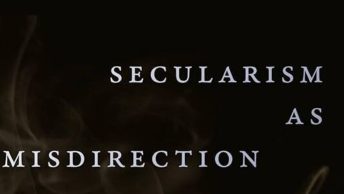Having both taught in Indian law schools and worked at the Indian Supreme Court I can vouch for the myriad of ways that citation is done, or not done, in the country. Sometimes you can find the source quickly from a cite, sometimes you are left scratching your head. Other times you just wish there was a cite. I believe SILC is first targeting law schools to introduce standardized citation, but I hope their efforts move shortly to the courts. Although I am not nit-picky about citation I have found poor citation often indicates that arguments are not rigorously supported. I think clarity on how to cite would not only save the reader time, but also the writer as it’s often unclear how one is suppose to cite when one is writing a legal document in India leaving one hoping that they have adopted the correct system (Blue Book, OSCOLA, what you just invented, etc.) I also very much support SILC’s commitment to keep the manual free and available on the web. When so many students – and lawyers – across India don’t have money to spend on law books the last thing they want to be spending money on is a citation manual. A recent article by Bar and Bench on SILC can be found here.
Standard Indian Legal Citation Launches
Standard Indian Legal Citation (SILC) launched earlier this week at a number of law schools in India. SILC is a legal citation system created by some recent law graduates and law students for the Indian context. It’s free and much shorter than the Blue Book. The above link is to SILC’s website where you can download a beta version of the manual. I know they are actively looking for feedback on how to improve the citation system and to get more law schools, law faculty, and law students involved.





At the very outset, I would like to congratulate the team of editors for mooting the idea of Standard Indian Legal Citation. We could never ask for anything better. Here are my suggestions.
1. Democratic structure: In the coming days, an attempt should be made to have at least one student representative and academician from every Indian Law College. Apart from editors and advisors, these members can be given the status of representatives who can voice their concerns. On the other hand, these representatives can go a long way in publicising SILC at their own institutions and influence their institutional journals to accept SILC as the preferred style.
2. Do away with footnotes?: From past few months, I have been doing research in Law in connection with other social sciences like Political Science, Economics and Sociology. This is where I came across APA style that does not use footnotes. I feel that footnotes create hassles. Our word processors are coming advanced; however, there are technical issues in using footnotes. Let me explain the reasons.
a. Footnotes used on one word processor cannot be easily exported to another word processor.
b. Footnotes usage on blogs / websites using HTML has its own disadvantages.
c. Footnotes are not supported in most of the e-book formats. Most of the self-publishing platforms discourage the use of footnotes.
d. Usage of footnotes implies that the manuscript HAS to be done using a computer.
e. Many of the lawyers and law academicians are finding it convenient to express their views on newspapers due to the large coverage. Newspapers never encourage footnotes. Having a citation method without the usage of footnotes ensures that the same SILC is used by law academicians while writing newspaper Op-Eds. (I understand that very limited sources are cited in newspaper Op-Eds).
f. We should come out with a citation method that ensures the transmission of the work in most of the formats viz. Blogs, websites, e-books, wordprocessors.
g. Avoiding footnotes will help in easy implementation of the citation style in different word processors and Zotero.
h. SILC is targeted to be used in the courts as well. However, in the trial courts, the stenographers do not use footnotes. Many of the applications are still drafted using typewriters. Usage of footnotes may act as a hindrance for lawyers to embrace this style completely.
3. Implementation of styles using softwares: There is a feature on MS-Word 2007 onwards that allows us to insert citation sources. Once we insert, we can at our will change the style. At present, only a few citation styles like APA, Chicago and ISO 690 are supported. An attempt should be made to create add-ons to MS-Word that supports SILC. An attempt should be made to implement SILC on other major softwares like LibreOffice and Zotero. Implementation of SILC on these softwares requires knowledge of coding. SILC community can get the work done by Freelance coders by paying them. The amount required for this can be estimated and sourced through donations. Implementation of SILC on major softwares will just strengthen it among the users. This will also help the researchers to concentrate on their content, rather than the citation.
4. Formatting style: SILC can also suggest a simple formatting style for the headings and spacing. Template files (for MS-Word and LibreOffice) can be released for such formatting. This will make the work of the researchers simpler. We need not worry too much about the heading and formatting.
5. SILC Classification system: On the lines of JEL Classification, SILC can also come out with a classication scheme for law topics. This will go a long way in classifying the articles and finding them at ease.